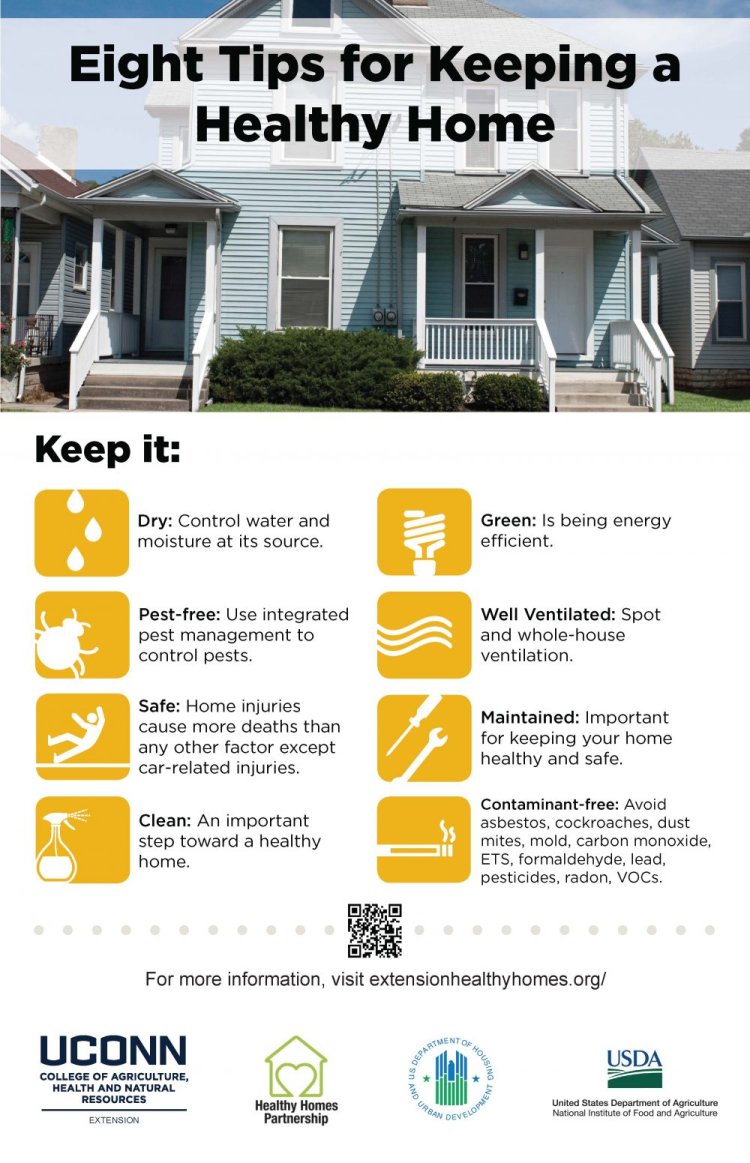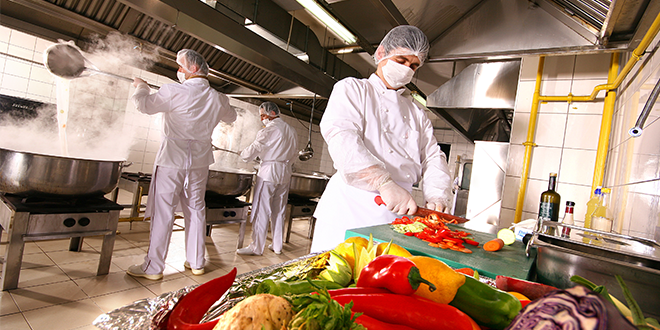How to Clean: Tips for Keeping Your Home Healthy

Regular cleaning is an important part of keeping your home healthy.
This includes preventing and mitigating bacteria, viruses, and other pests like moths, silverfish, and bedbugs that can do harm if left unchecked.
And regular cleaning is even more crucial during the COVID-19 pandemic. SARS-CoV-2, the virus that causes COVID-19, can live on some surfaces in your home for days.
Luckily, it’s easy to get rid of the virus material from these surfaces with some basic disinfectants and cleaning procedures.
Read on to learn about some common trouble spots around the house and solutions for keeping your living spaces safe and healthy.
Everyone gravitates to the kitchen.
Part restaurant, part entertainment center, and part family room, it’s ground zero for the most troublesome spots in the home. Practically every surface is a magnet for bacteria, viruses, germs, insects, and other pests.
Your kitchen can also be one of the most likely places you can transfer a virus, like SARS-CoV-2, into your household. A 2020 study found that this coronavirus can live for hours or days on many common kitchen surfaces:
- copper: 8 hours
- cardboard: 24 hours
- stainless steel: 48 hours
- plastic: 3 days
Here are some general tips for disinfecting your kitchen surfaces to prevent COVID-19:
- Wash your hands with soap and water for 20 seconds before you touch anything, especially if you’ve been outside or at work.
- Sanitize your hands with a 60 percent (or higher) alcohol sanitizer if soap and water aren’t immediately available.
- Regularly wipe down all kitchen surfaces, including counters, tabletops, and any other surface you frequently touch, like stove or microwave buttons. Use an EPA-approved disinfectant if available.
- Wash all dishes and silverware before and after you use them.
Sponges and dish towels
A sponge can carry mold and thousands of germs and foodborne pathogens if it’s not cleaned or stored properly.
Things you can do to kill germs on a sponge include:
- placing the sponge in the dishwasher with a high temperature and the drying cycle on
- wetting it and putting it in the microwave for 1–2 minutes
- squeezing it out well after every use and keeping it in a place that allows it to air dry
Cloth dish towels can also harbor unhealthy microorganisms, even if they’re only used for drying clean dishes. Wash them often with your machine temperature dial set to hot.
Cutting board
Never cut fruits or vegetables on the same cutting board you use to slice raw meat. Clean it with hot water and soap first.
Keeping veggies and raw meat separated will avoid cross-contamination and the possible spread of salmonella, E. coli, and other harmful bacteria.
It’s a good idea to have two cutting boards: one for raw meat and one for fruits, vegetables, and everything else.
Countertops
Keep all surfaces cleaned and sanitized after you cook.
This extra step will help eliminate food bacteria such as Campylobacter, a common cause of diarrhea. This will also discourage insects from feasting on the leftovers left on the counter.
Household pests like cockroaches can carry a number of pathogens and can also trigger asthma and allergies in some people.
You can sanitize your countertops with bleach after wiping them down with soap and water. One teaspoon of chlorine bleach per quart of water will do the trick. This extra step will help kill any lingering pathogens.
Using bleach with chlorine will also help remove any virus material related to COVID-19. Ammonia will also work. Just don’t use bleach and ammonia together, as they can combine to produce harmful chemicals.
Keep a lid on possible insect infestations by washing dishes and utensils immediately after eating, storing food in tightly sealed containers, and keeping trash in a container with a lid on it.
Whether you share a bed with someone else or not, you’re never alone in bed.
Dust, dust mites, and possibly pet dander keep you company all the time. These bed bugs add to poor air quality and can irritate the best of us, whether you’re allergic or not allergic to them.
This is because dust mites produce waste and lay eggs. Add hair, dead skin, fungi, and pollen, and you get an allergen-filled combination that can pack a wallop to sensitive individuals.
Here are some tips to get rid of dust mites:
- Use zippered plastic mattress and pillow covers.
- Once a week, wash all bedding in hot water above 130˚F to kill dust mites.
- Vacuum uncovered mattresses regularly.
The bathroom is a relatively new thing. For thousands of years, people relied on outhouses and public baths, and for good reason — to keep pathogens and waste away from living quarters.
Today, we have the luxury of toilets and bathtubs, and pathogens can lurk where you wouldn’t expect them.

Toilet handle
The toilet may be an easy mark for potential health dangers in the bathroom, but it’s for a reason you might not expect.
Sure, you know to keep the bowl and the seat clean, but how often do you clean the flush handle? Rotavirus, enterococcus, and other nasty pests can live there.
Enterococcus can cause bacterial gastroenteritis. Rotavirus is the most common cause of diarrhea among children.
The new coronavirus can also survive on steel and plastic toilet handles for up to 3 days.
Keep the flush handle sanitized with a disinfectant that specifically lists fighting bacteria or viruses on the label. Sanitizing with a 60 percent alcohol solution can also help remove the virus particles of SARS-CoV-2.
Floor to ceiling
Mold can thrive in the bathroom and present a number of health problems, from watery, itchy eyes to asthma attacks.
Another danger lurking in your bathroom, and possibly throughout your house, is trichophyton.
This fungus causes ringworm and athlete’s foot and can be passed from one person’s foot to the next via flooring.
Here are some tips to clean mold and trichophyton:
- Use a disinfectant designed to kill mold and fungus in the bathroom.
- After bathing or showering, wipe down the tub or shower walls and curtain with a towel or squeegee. Some shower curtains can even be thrown in the washing machine.
- Throw soiled tissues away and empty the wastebasket daily. Don’t leave them lying around the room or on top of the counter.
Rhinovirus, the main cause of the common cold, spreads easily when people touch contaminated surfaces and then touch their eyes, nose, or mouth. This is true of COVID-19, too.
Rhinovirus and coronaviruses can live on surfaces for days, so clean your bathroom regularly.

Bacteria and viruses can easily spread in other commonly used surfaces in your home, too.
Doorknobs
They do more than allow you into your home or a room. These handles can carry staph, short for Staphylococcus aureus, a common bacterium.
While usually not a threat, staph can be harmful if it enters your mouth, eyes, cuts, or scrapes, and can cause a wide spectrum of problems.
The new coronavirus can also get on your doorknobs if you’re regularly going to work or going out and then touching doorknobs before washing your hands.
A good swipe of the doorknob with an antibacterial cleaner or 60 percent alcohol solution will keep staph and other harmful microorganisms at bay.
Walls
If walls could talk, they would probably ask you to reconsider your paint choice — not the color but the type. Paints contain volatile organic compounds (VOCs), a huge source of indoor air pollution.
These chemicals, also found in upholstery, textiles, and other building materials, can cause a number of health-related issues. Of critical concern are paints in older homes that might contain lead.
The manufacturing of lead-based paint was banned in 1978. If your house was built after that, you’re probably fine on this one.
To reduce your exposure to these toxic vapors, choose low-VOC paints, milk paints, or whitewashes.
In older homes, check for the presence of lead by hiring a licensed risk assessor or by purchasing a lead home test kit at your local hardware store.
If you discover lead in your home, inquire about lead removal products at the hardware store or hire an experienced specialist to remove it.
Carpets and rugs
Many carpets and the adhesives and padding needed to install them emit the same VOCs as paint.
Some people experience flu-like symptoms after installing new carpet and others complain of eye, nose, and throat irritation.
Here are some ways you can avoid these symptoms and health issues related to VOCs in carpets and rugs:
- Ask that your carpet be aired out before installation.
- Open windows and doors and use fans to allow as much air to circulate in the room as possible.
- Consider selecting carpet and related products that meet low-VOC emitting criteria for indoor air quality acceptance.
- Vacuum your carpets and rugs frequently to ease allergic reactions to dust and pet dander.
- Open windows periodically to help ventilate a room, especially after installing new carpet or painting walls.
- Consider using an air purifier or house plants to filter toxins and any airborne VOCs out of the air.
SARS-CoV-2 can survive on carpets, rugs, and other fibers or fabrics for several hours.
You’re not likely to get the virus from these sources, but you can track the virus throughout your home if you walk on a contaminated carpet or rug and then to other rooms in your home.
Shake out your rugs regularly and steam clean your carpets as often as you can.
An air purifier may also help capture any
Dust
We sometimes think of household dust as dirt, but it’s much more than that.
A 2016 review published in the Environmental Science & Technology journal shows how household dust resembles a “parking lot for chemicals” in your home.
Researchers have identified 45 potentially harmful chemicals in household dust to examine. At least 10 of these chemicals were in almost all the samples taken from sites throughout the United States.
According to the review, dust can contribute to a wide array of health problems, including:
- allergies
- asthma
- respiratory problems
- cancers and disorders of the reproductive and nervous systems
These effects can increase in the winter when we typically spend more time indoors.
Dust can amount to a toxic soup made up of chemicals from fragrances, cleaning products, personal care products, and even the building materials your house is made of.
To keep problems from dust to a minimum, the U.S. Department of Housing and Urban Development recommends that you keep your home:
- clean
- dry
- well-ventilated
- maintained
- free of pests
- free of contaminants
Natural gas
If your house uses natural gas for heating or cooking, you should always be alert for leaks.
Natural gas leaks are rare, but they can combust if near an open flame. They can also make you sick over the long term.
Evacuate your home and call 911 or the emergency number for your utility provider immediately if you smell gas or an odor like rotten eggs.
Carbon monoxide
Carbon monoxide is a colorless, odorless, and tasteless gas that can cause flu-like symptoms or even death.
It’s a byproduct of fuel-burning appliances, including some space heaters, furnaces, water heaters, cooking ranges, portable generators, and car and truck engines.
To avoid problems, be sure your house is fitted with carbon monoxide detectors. Keep all appliances in good repair and never use a charcoal grill or portable generator inside your home.
According to the American Red Cross, a home fire can grow from a spark to a life-threatening emergency within 2 minutes.
They suggest simple precautions to avoid fire danger:
- Always have operating smoke alarms in your home. Check them once every month and install new batteries every 6 months.
- Have a fire escape plan that all household members know.
- If a fire does occur, get out of the house and stay out. Call 911 for help.
Most house fires start in the kitchen. They suggest taking the following additional fire precautions there:
- Keep curtains, towel racks, and paper towel dispensers at a distance from stove burners.
- Make sure your microwave vents aren’t obstructed.
- Have a fire extinguisher within easy reach.
- Don’t throw water on a grease fire. If a fire starts in a pan, put a lid on it or use your fire extinguisher.
According to the
Each year, 1 in 4 adults over the age of 65 have a fall. This results in 3 million hospital emergency room visits and 800,000 hospitalizations. A fall can be a life-changing event for older adults.
Here are some simple measures you can take to improve the safety of your home.
- Remove trip hazards. Take away anything you might trip over from your stairs and walkways, including papers, books, clothes, and shoes.
- Prevent rug slippage. Remove small throw rugs or put nonslip, double-slip tape on their undersides to keep them in place.
- Install grab bars. Have grab bars next to and inside the tub, and next to the toilet.
- Use nonslip mats in your bathroom. Never place anything you might slip on in the bathtub or the shower.
- Exercise. One of the main risk factors for falls is lower-body weakness. Exercise to keep your legs and torso strong and flexible. Tai chi, yoga, and swimming are especially good activities.
- Keep your balance. Do what you can to improve any difficulties you have with walking and balance. Tai chi and yoga are helpful.
- Know your medications. Some medicines including tranquilizers, sedatives, or antidepressants can affect your balance. Ask your doctor to review your medications with you periodically.
- Vision check. Have your vision checked every year and wear the corrective lenses that you need.
- Wear proper shoes. Make sure your footwear fits and is in good repair.










